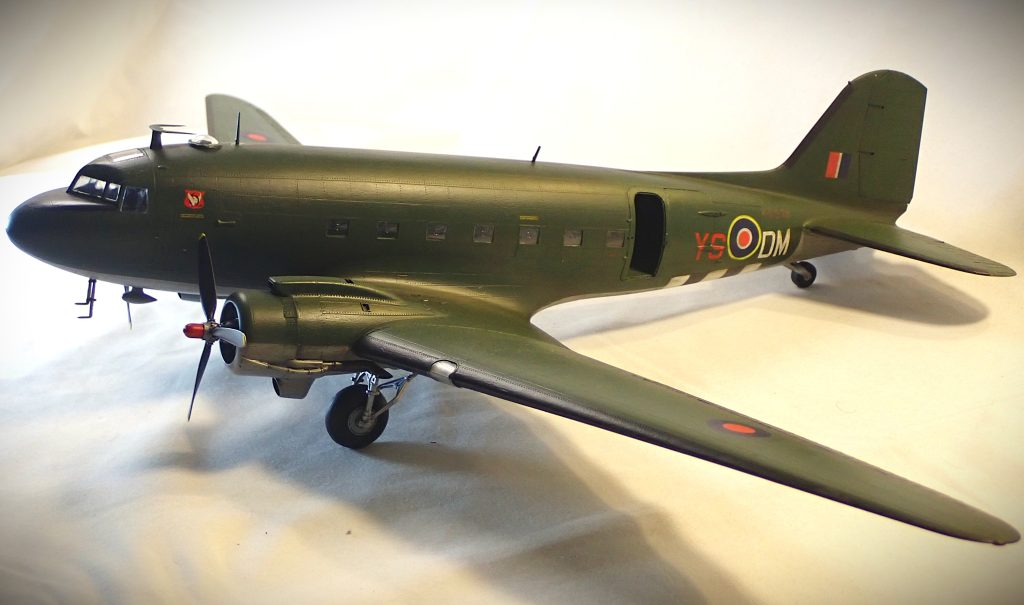The C-47 Skytrain is a direct descendant of the DC-3 Airliner. It is a military version with many changes and modifications including large cargo doors, strengthened floors and shorter tail to accommodate glider towing shackles. It is a twin-engine low swept back wing monoplane transport aircraft powered by Pratt & Whitney R-2000 Twin Wasp radial engines. It had a crew of four and collapsible seating for 28 paratroopers or 6,000lb of cargo when the seating was stowed. It was produced in large numbers and used by many countries worldwide. A staggering 98 countries used the type at one stage or another. Over 10,100 were produced in two facilities in America.
It was used by the RAF from early 1942, the first being in used in India. During the war over 2,000 C-47 aircraft were assigned under the Lend Lease Act to Britain. Other Commonwealth countries including Australia, India, Canada, South Africa and New Zealand also used the C-47. It was renamed the ‘Dakota’ and supplied in three versions, Dakota I, Dakota III and Dakota IV each with minor alterations, mainly engine upgrades. There was a Dakota II which was a C-53 Skytrooper variant without the Cargo doors but only 9 were procured. The Dakota became the main transport aircraft during the war ferrying troops and cargo to wherever needed. There was a plan to build Dakotas under licence by Airspeed, but the project never came to fruition. Airspeed concentrated on Oxfords and Horsa gliders.
During Operation Overlord British Dakotas dropped many paratroopers of British 2nd Airborne around the Eastern wing of the invasion area as well as towing gliders for the Air Landing Brigades. After D-Day Dakotas flew countless resupply drops along the British sector of the beachhead and inland drops as the advance continued.
The Paratrooper role was repeated for the drops around Arnhem for Operation Market Garden, this time with 6th Airborne. Glider Regiments were also towed to their landing areas by Dakotas. Again, many resupply missions were flown by the Dakota squadrons almost always coming under ground fire from AA batteries. Of the 2,000 RAF aircraft supplied 370 were lost during the course of the war. They had to fly low and slow to drop their cargo which made for perfect targets.
The RAF retained the Dakota after hostilities ceased, and it continued in service until the late 1950’s when the majority were retired. Many were used during the Berlin Airlift. Some continued in service in secondary roles into the mid 1960’s.
There are many surviving aircraft, and some could argue that the C-47 never went out of service with the USAAF. Many airworthy examples exist in military and civilian versions. In the UK there are six airworthy examples, five in private collections and ZA947 which operates with the BBMF. There are seven on static display in various Museums across the country including IWM, Duxford and the RAF Museum Cosford.
